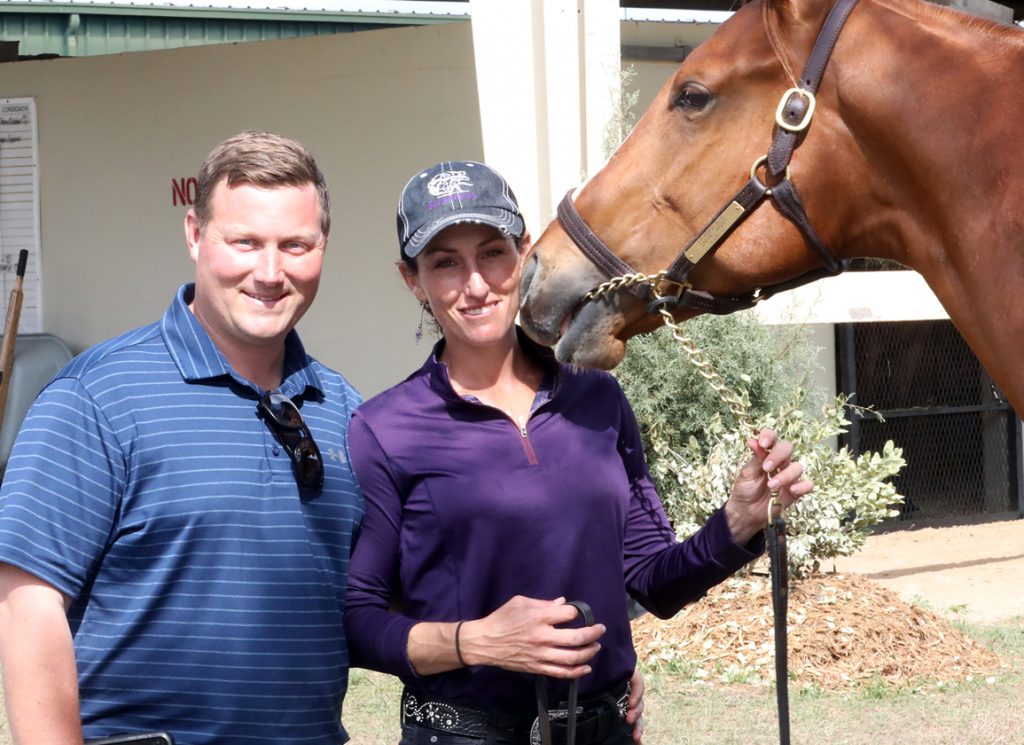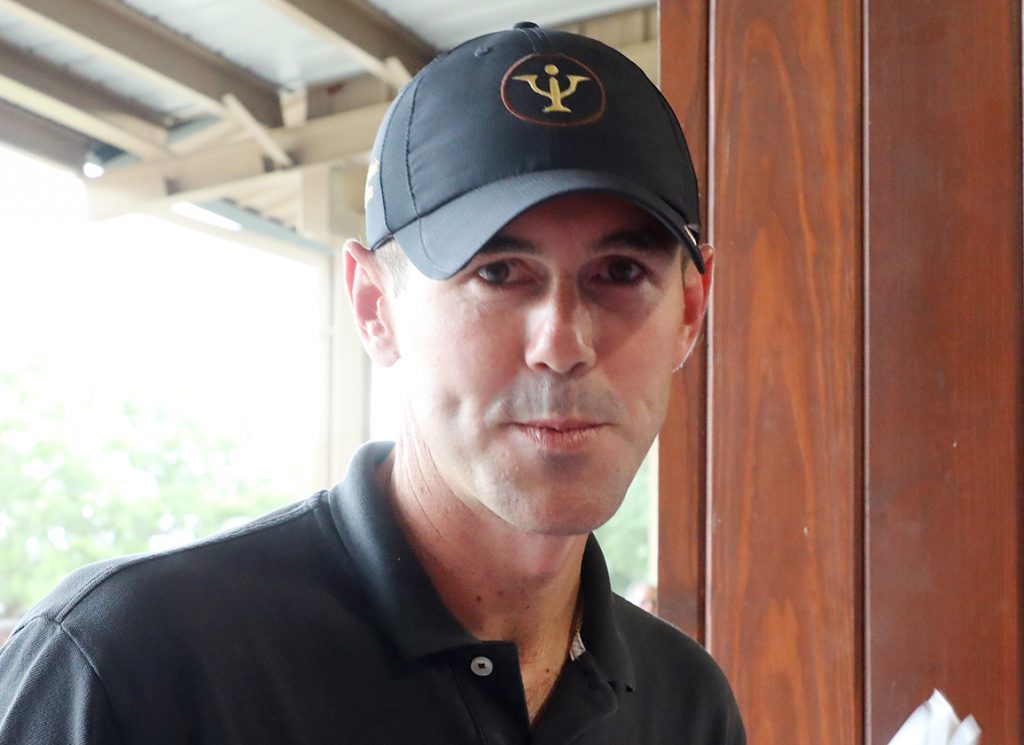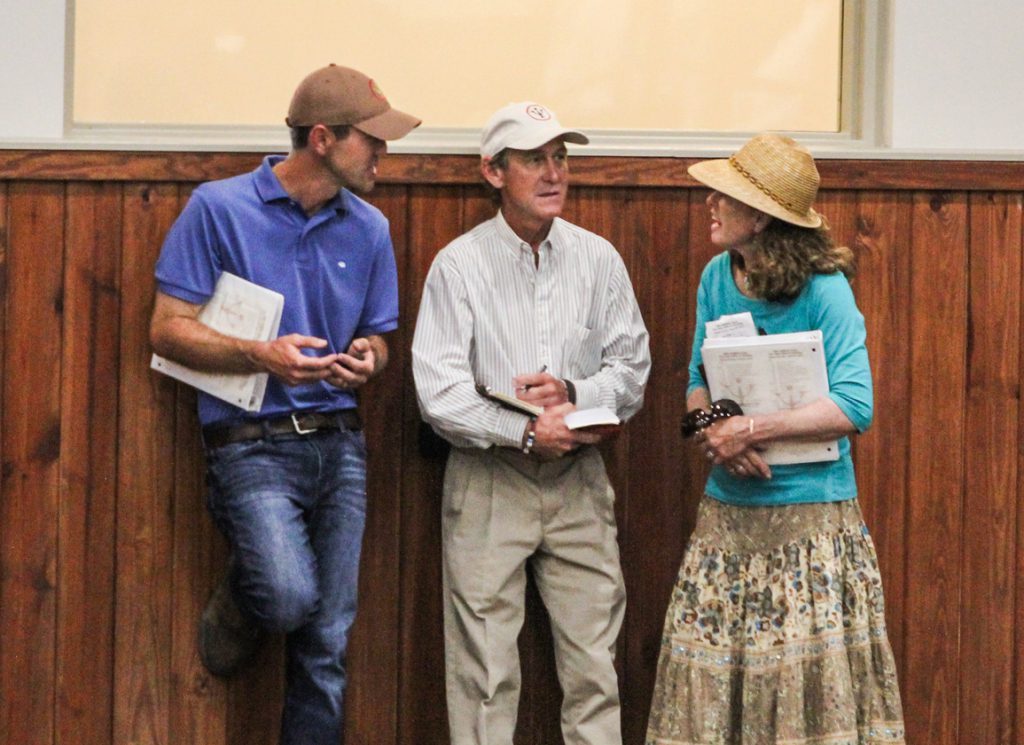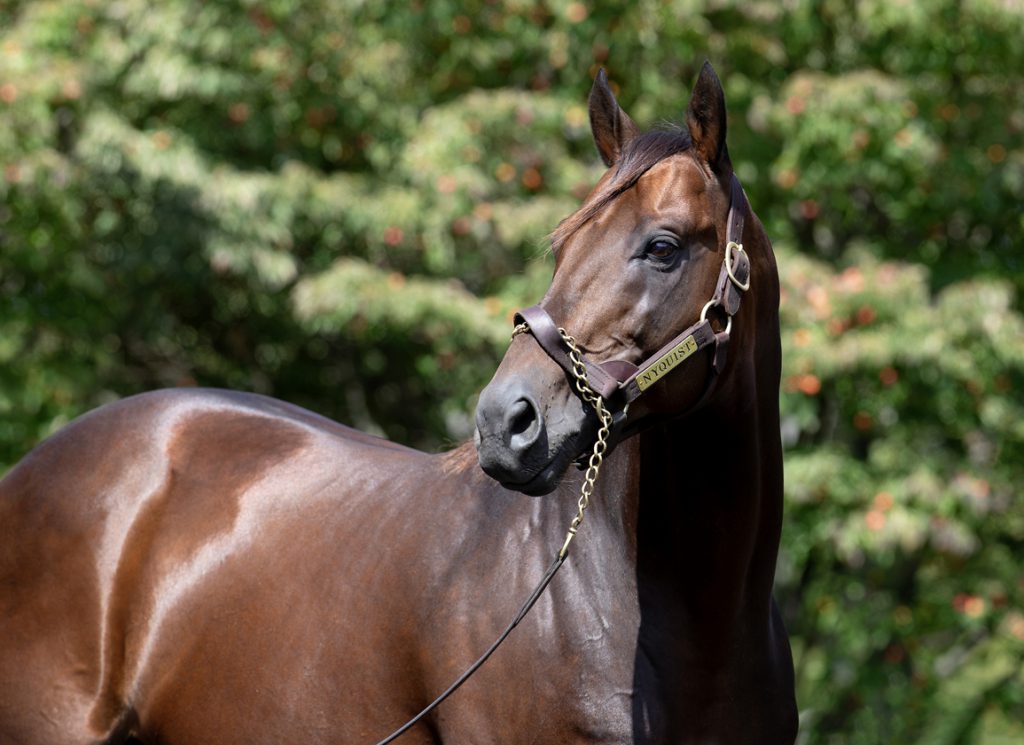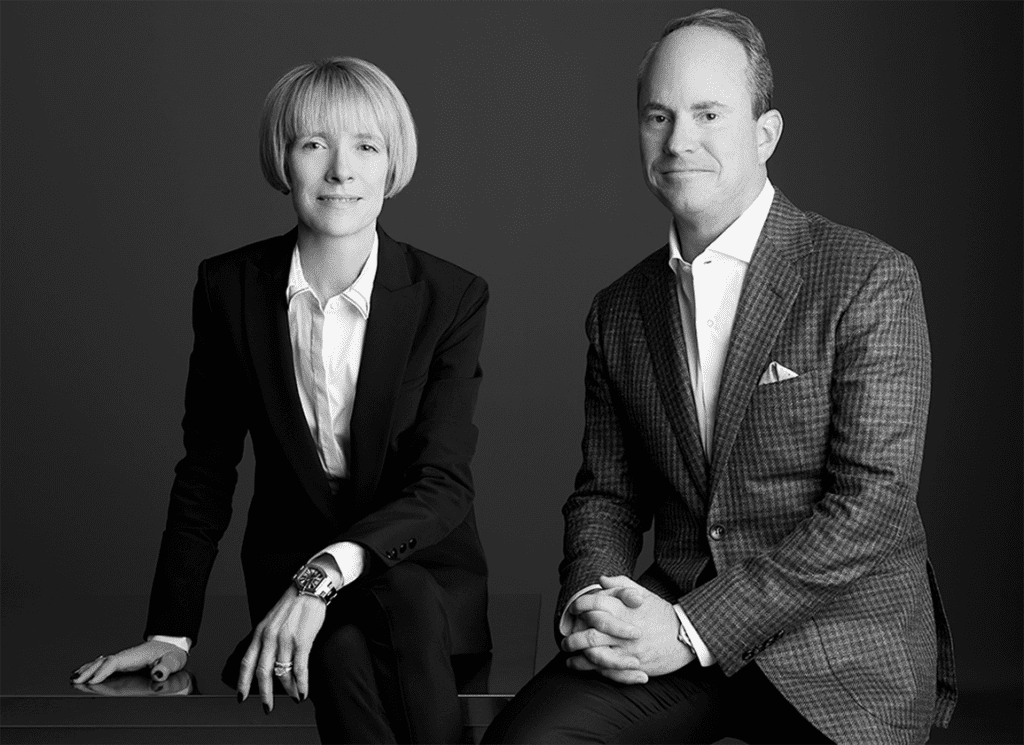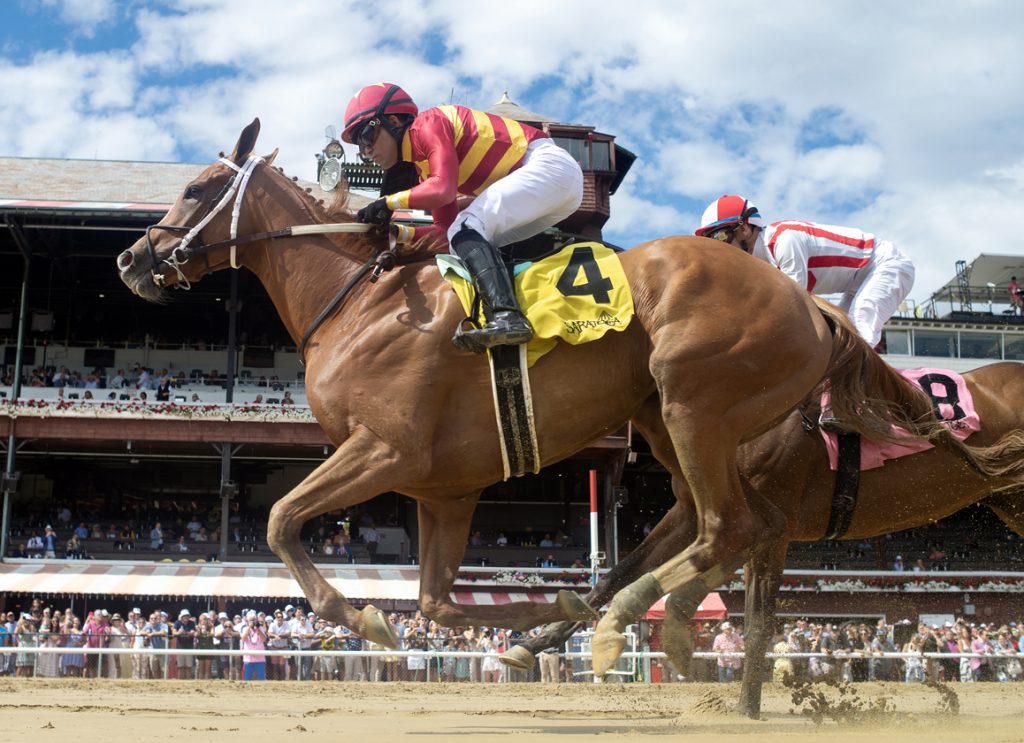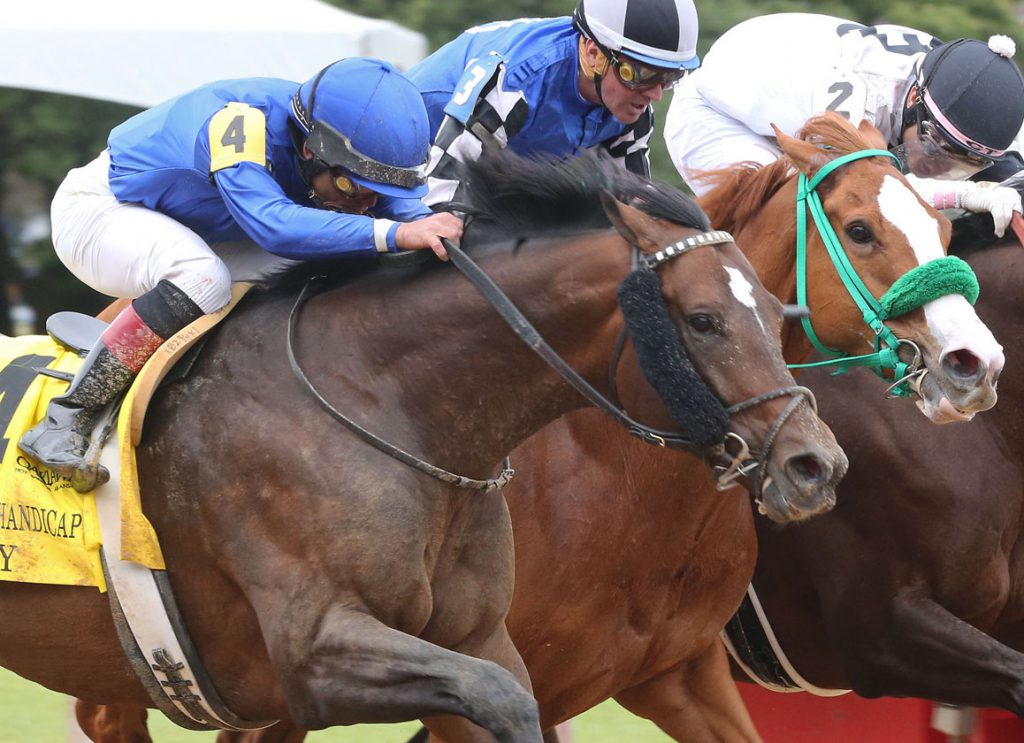Today we conclude our survey of Kentucky stallion options with a look at the apex of the pyramid, comprising a couple of dozen standing between $60,000 and $250,000–besides whatever it might take to secure your mare an audience with Justify.
It feels presumptuous enough to offer counsel even on cheaper sires, when each mating should boil down to you finding an optimal fit for an individual mare that you know inside out. Still greater hesitation, then, must precede any attempt to discover “value” among this lot.
No stallion has any business standing at this kind of money unless demonstrably of elite caliber. So while we'll be nervously proposing a Podium, as usual, we won't be dwelling unduly on the rest. You can take it as read that most of these horses must be punching their weight, both on the track and at the sales.
Instead, I'd just like to make one or two more general observations, in concluding this series, on the current trading environment.
Here's a series of what feel like pretty uncontentious statements.
1) Fees, overall, feel rather too high now that a long bull run has tapered off and the middle market is being stretched by polarization.
2) At the same time, books assembled by unproven sires are reaching a size that must contain seeds of peril for the future of the breed. We know that most won't make the grade, meaning that the gene pool is increasingly being flooded with… well, choose your own pejorative.
3) But stallion farms have little room for maneuver, on either front. Knowing how the commercial market will behave nowadays, their accountants have only two options to retrieve the massive investment required to recruit an attractive stallion. The first is to start fees as high as they can, on the basis that it's now closer to “one and out” than “three and out”. The other is to keep fees more accessible, and instead go all out for volume. That necessarily exposes breeders to bringing an unexceptional specimen to saturated catalogues, but they all book their mares with their eyes open and many are evidently prepared to gamble on a home run. Pricing a horse fairly without resorting to appalling volume is an extremely difficult balancing act, and in this series I have tried to identify farms that look after their clients best in those terms.
4) Commercial breeders operate in a very difficult environment and need to put bread on the table. If you've had a weanling break a leg playing in a paddock, or lost a mare foaling, then you're going not going to be factoring too many noble thoughts about the long-term health of the breed into your choice of stallion. Same applies to all the pinhookers. The real blame, therefore, rests with those directing ringside spending.
5) These, in turn, have only one cogent explanation for their behavior. And no, it's not because rolling the dice on new stallions is their only window for hitting an elite stallion because all the proven ones are too expensive. Okay, horses like Gun Runner and Curlin have turned out to be at their most accessible when starting out, even though priced at or near the top of their intake. But the reality is that the vast majority of rookies will never match the ratios consistently achieved by some of the highly affordable, prove-a-mare stalwarts noted in this series. So the remaining logic is a self-fulfilling one: buyers like new sires because these will typically turn out to have received their biggest and best books, precisely because that's where all the attention is expected to be.
6) But hang on a minute. What happens when these books become so big that the mare quality becomes swamped by quantity? If you truly believe that you have spotted a stallion with unusual potential, why not stick with him as his second, third and fourth books dwindle? He may no longer be getting top mares, but good luck picking out the gold from the glister when the rookies are routinely corralling way over 200. You'd still be getting that priceless “sire power,” but at a diminishing cost. Where were all these guys when Into Mischief, Tapit and War Front had no friends in their third and fourth years? That's a real service for your clients, hanging in there for the value when everyone else runs away screaming. Low tide is exactly when you should be getting aboard. As a young stallion gets closer to putting horses into the gate, surely you're just getting closer to being proved right?
7) That leaves us with little alternative but to assume that professional counsellors spend their clients' money on new sires first and foremost because they don't really have to put their neck on the line. They're participating in a communal game of fantasy breeding, and when they do hit a dud–and we all know what a dud looks like, even if hundreds of foals means that he can still be promoted for “yet another stakes winner”–they can shrug their shoulders and say, “Don't blame me, everybody loved that horse!” And conversely they can gloat when they happen to land on a seam of gold. Well, even I can do that occasionally, and in the earlier stages of this series I've been perfectly happy to suggest a roll of the dice on one or two young horses that seem to be underpriced for their potential. But for every Not This Time I might find, over the years there's no doubt that I'm going to like as many duds as the next guy.
So, in conclusion: the bottom line is that stallion fees are only too high if you lack the courage of your convictions. Certainly, there can't have been many better epochs for the breed-to-race programs. But as I never tire of saying, there should be nothing more commercial than putting a winner under your mare.
Whether you want to bring down fees, or book sizes, the solution is the same. You just need to broaden the type of stallions that you support.
That way, everyone's a winner. Using horses that have at least demonstrated some competence to replicate the prowess that earned them a place at stud would a) allow relief on fees, b) even out book sizes, c) improve your chances of producing a racehorse, and d) duly improve the resilience of the racing population, with all the incidental benefits to a sport under growing social pressure.
The only comfort about our present situation is a cold one, in that things are even worse in Europe. The saving grace of the American industry is that it's still a commercial aspiration– whatever 293 mares to Golden Pal might tell you–to have a horse hold out through two turns of dirt on the first Saturday in May. And that, of course, is a competence that unites the majority of the elite sires with whom we close our series today.
This price range admits only one absolute beginner, Cody's Wish, whose intake received a separate assessment at the start of the series. And overall, logically enough, there are far fewer untested sires standing at this kind of fee than lower down the pyramid: only FLIGHTLINE ($150,000), LIFE IS GOOD ($85,000) and ESSENTIAL QUALITY ($65,000) are maintaining a place at this level pending examination on the racetrack. Nobody needs reminding of the excellence of their first careers, and the first two only have their first weanlings due. But it's perhaps instructive of the type of program keenest to tap into Essential Quality's wholesome combination of class and constitution (champion at two and three) with family (now further decorated by Forte, who shares a third dam) that only five weanlings were traded out from his debut crop (eight offered; median $280,000).
At the other end of the scale, we have a few sires whose right to stand at dizzy fees is too familiar to required reiteration. We have just celebrated a fifth consecutive title for INTO MISCHIEF ($250,000), who has duly opened new horizons with the mid-career upgrade in his mares. Competing with the Into Mischief production line may well leave CURLIN ($250,000) as one of the best sires never to have his status formally gilded by a championship. And TAPIT ($185,000) is still the main man, when it comes to lifetime ratios. He had a quietish year by his metronomic standards, and his books will be being prudently managed these days, but I still hope to see him come up with that Derby winner to round off a resume that features stakes winners at one-in-10 named foals, 101 of them at graded level at 6.2 percent.
Nor is there any need to dwell on the young guns JUSTIFY (private), whose success either side of the water–six elite scorers in 2023, notably an outstanding champion juvenile in Europe–suggests that he may be eligible for a historic role in our urgent quest for sires to reconcile the disastrous segregation of European and American gene pools; and GUN RUNNER ($250,000), whose early percentages remain simply freakish. In 2023 his black-type, graded-stakes and Grade I performers respectively came in at 17.2, 11.8 and 5.4 percent of starters!
A lot of the best sires are now in the evening of their careers, and these two appear to have a huge opportunity to dominate in the years ahead, along with NOT THIS TIME ($150,000) who will now only just be consolidating his breakout.
It would perhaps be taking loyalty too far to give Not This Time his umpteenth Value Podium at 10 times the fee that first excited us, but rest assured there's an awful lot still to come from a stallion who complements the priceless transatlantic legacy of Giant's Causeway with indigenous Tartan Farms dirt speed. Remember that his juveniles this year will be his first sired even at $40,000, up from just $12,500. They reached a median of $210,000 (average $287,025) as yearlings, nice work at the conception fee (and up from $150,000/$209,688). Even after adding Up to the Mark as a fifth Grade I winner in three crops, Not This Time may do well to keep up his incredible start as the crop conceived at his lowest ebb turns three. But the upgrade in quality will soon kick in, and then all bets will be off.
In contrast UNCLE MO ($150,000) first stood at this fee back in 2017 and QUALITY ROAD ($200,000) reached the same mark by 2019. By this stage, then, they have pretty well established who and what they are, and duly finished fourth and fifth respectively in the general list. Quality Road has become a particularly consistent sales performer, advancing his median in 2023 to $375,000 from $350,000, behind only Into Mischief and Curlin. It was Uncle Mo (median $212,500) who fired his racetrack arrows closer to the bull's-eye in 2023, 14 stakes winners (at 4.4 percent of starters) including three at Grade I level, whereas Quality Road's 18 (7.2 percent) featured just National Treasure at that altitude.
If that pair are plainly in their prime, GOOD MAGIC ($125,000) has broken into the six-figure club after producing the Derby winner at the first attempt. That's quite a hike from $50,000 but he's no one-trick pony, counting Eclipse finalist Muth among half a dozen black-type winners already from 45 juvenile starters in 2023. Obviously, he's going to have to keep advancing his ringside performance to warrant this fee, having achieved a median of $155,000 (average $217,390) with his latest crop. But that was up from $100,000 ($130,250) in 2022, and must itself be acknowledged a fine yield from a $30,000 conception fee.
From the same glitzy intake, BOLT D'ORO rises to $60,000 from $35,000 after a second productive campaign. Though his yearling dividends slipped, at a median $82,500/average $113,218, they similarly represented a punchy yield on a $15,000 conception fee. Bolt d'Oro has started a higher proportion of his foals than Justify and Good Magic, so we'll have to see whether that's a function of superior precocity or overall soundness. As noted earlier in the series, however, what really excites about this class is its depth: horses like Army Mule and Girvin are essentially matching their more expensive peers from much lower fees and volume. Those horses deserve a chance to show what do with their own upgrades before anyone reaches any definitive conclusions about the pecking order.
At the other end of the spectrum are some much older sires with a sustained record of achievement behind them. WAR FRONT has had his books managed with restraint for so long that he will never have adequate volume to shake up the general list, unless he has a real star, but even without one last year he maintained his customary strike-rates, for instance with 10 graded stakes winners from just 166 starters. His career ratios are beyond even Tapit, which makes $100,000 a terrific play for those who a) can afford it and b) aren't prey to a childish aversion to turf.
The MUNNINGS trajectory got so giddy last year that he was hoisted to six figures but that proved to be a moment of overexcitement and, after his book shrank to 146 from 204, he has dropped to $75,000 for 2024. His reputation has raced ahead of his fee for most of his career and he's actually on the point of upgrading his stock on the track, his incoming juveniles being the first conceived even at $40,000 and duly nudging his yearling median forward ($160,000 from $150,000). He has that big 2022 book of $85,000 covers in the pipeline, and the access he has enjoyed to better mares should also help him improve a somewhat pedestrian ratio for his five elite scorers to date. Munnings is nowadays virtually a lock for the top 10 in the general list and that makes him look pretty fairly priced.
His studmate PRACTICAL JOKE is becoming one of the busiest avenues to his sire, albeit his affordability is diminishing (fee up to $65,000 from $25,000). Commercial breeders can't get enough of him, his latest yearlings achieving a terrific yield (median $110,000/average $153,807) on the cover fee. The obvious caveat is that his volume is now such (482 mares over the last two years!) that you had better not find yourself with an ordinary specimen…
CANDY RIDE (Arg) was one of those middle-rank sires most exposed to polarization at the sales (median down to $100,000, which was half his average, from $140,000 the previous year) but remains settled at $75,000 after Candied and Geaux Rocket Ride kept his name in lights. His son TWIRLING CANDY (average $160,064 also well ahead of his $90,000 median; clearly their good ones are very good) similarly stands at $60,000 for a third year after producing his eighth Grade I winner, albeit his respectable lifetime ratios don't quite match those of STREET SENSE at the same fee.
Street Sense arguably offers fine value at this level, even if his bargain buddy Hard Spun would make as much sense at a lower fee: some of their indices are uncannily in step. But at the sales Street Sense is maintaining a $150,000 average, well over double that of Hard Spun. That confirms the latter to be an end user's delight, but Street Sense covers all bases.
Their venerable neighbor MEDAGLIA D'ORO reached a peak of $250,000 in 2018 but was slashed from $150,000 to $100,000 in 2022 and now suffers a fresh indignity at $75,000. The fact is that his Hong Kong 'ATM' Golden Sixty belongs to the same crop as his last big star here, Bolt d'Oro, leaving the tide of fashion to ebb somewhat: his latest yearlings had to settle for a $180,000 median/$248,371 average (down from $242,500/$339,918). Nonetheless this is the same flesh and blood whose 22 Grade I winners in the Northern Hemisphere (26 overall) long gave him top billing at Saratoga and Book I. Thoroughbreds will always confound assumptions and it would be gratifying to see such a glamorous specimen muster one or two last hurrahs in the evening of his career.
VALUE PODIUM
Bronze Medal: GHOSTZAPPER
Awesome Again–Baby Zip (Relaunch)
$75,000, Hill 'n' Dale
I guess it all depends what you're trying to achieve. But if you're one of those strange people simply trying to breed as good a racehorse as you can, then you certainly won't mind that this magnificent animal has now entered his 24th year.
He was not very temperately handled early in his stud career, launched at $200,000 and slashed from $125,000 to $30,000 after his first juveniles blew out. Though a colt from his debut crop won the GI Blue Grass S., he was promptly cut again to $20,000. It was a long road back, but he's now just two short of bringing up 100 stakes winners at 7.8 percent of named foals.
Across the board, in fact, he's basically the same sire as Uncle Mo, who gets his black-type winners at 7.1 percent. Their stakes performers come at 13.1 and 13 percent respectively; Ghostzapper's graded stakes winners at 4.2 percent, against 3.5 percent for Uncle Mo; graded stakes performers weigh in at 7.2 and 7.7 percent; and 14 Grade I winners apiece come at 1.1 and 1.0 percent. But Uncle Mo stands at twice the fee, and has accumulated more named foals from six fewer crops!
Obviously Ghostzapper pays a commercial price for being less likely to produce precocious horses, but the likes of Mystic Guide and Goodnight Olive continue to reward those prepared to await the kind of maturity that enabled their sire to stretch his murderous speed, aged four, to one of the great modern performances. And anyone who saw the GIII Saratoga Special last summer will form their own views about Ghostzapper never getting precocious stock!
In the meantime, he has emerged, consistently with the sire-line, as an important broodmare sire, his daughters having now given us Up To The Mark as well as Justify himself. I don't know whether Ghostzapper was confined to 75 mares last year in deference to his age, or just because of commercial wariness. As your ideal Book II sire, he was vulnerable to market polarization this year. In the circumstances he did well to maintain a $170,590 average ($187,916 in 2022), albeit his median duly suffered ($115,000 down from $165,500).
But that's a sideshow at this time of his life. You know what he can do for your program, especially if you wouldn't mind retaining a filly. And you also know that there's a finite opportunity to tap so proximately into a combination as resonant as grandsire Deputy Minister and damsire Relaunch. It's a privilege worth paying for and, relative to plenty of untested young sires, it's one that doesn't cost so much.
Silver Medal: NYQUIST
Uncle Mo–Seeking Gabrielle (Forestry)
$85,000, Darley
Here's a horse back on the move, with his incoming juveniles sired at $75,000–up from $40,000, a response to the freshman title he won in 2020. He then had to be throttled back to $55,000 after hitting a flat spot the following year, mustering a solitary graded stakes winner, but that is now turning out to have been a blip.
This year he came up with his third and fourth Grade I winners, and was denied a fifth in poignant circumstances, as sire of New York Thunder. Into their slipstream followed a bunch of juveniles that showed both the precocity to win at Royal Ascot (Crimson Advocate) and the flair to put themselves on the dirt Classic radar (Nysos, Knighstbridge). Nysos looks a pretty freakish talent and we know that his sire stretched his own juvenile speed when and where it counted, on the first Saturday in May.
Nyquist's $140,000 yearling median in 2023 needs to keep progressing, to justify his new fee, but hopefully that process is well underway (median was $110,000 in 2022, and average meanwhile markedly up at $192,749 from $148,275). He remained fully subscribed during his couple of years regrouping at $55,000, so there's unlikely to be any kind of bump in the road now.
The one he endured in his second year has certainly levelled off, so that even though he emerged in the same intake as Not This Time, he's faring pretty respectably even against that monster talent. Nyquist can't match his ratios for winners in each category, but in black-type, graded stakes and Grade I performers there's not much between them: 12.7, 6.7 and 1.8 percent of named foals for Not This Time and 12.1, 6.5 and 2.3 percent for Nyquist. True, Not This Time must have had lesser materials with which to make his name, but he's now at a fee altitude that requires oxygen masks, whereas Nyquist is still hauling his way up the rope behind him.
Gold Medal: CONSTITUTION
Tapit–Baffled (Distorted Humor)
$110,000, WinStar
This horse is at an interesting crossroads. His incoming juveniles were conceived at $85,000, the sophomores at $40,000, and his 4-year-olds at just $15,000. From 48 starters last year, even this latter group came close to a Grade I score through Webslinger, beaten a head in the Saratoga Derby and a neck in the Hollywood Derby.
The 2024 sophomores emerge from a bumper crop of 187 live foals, the first Constitution produced after his freshman breakout in 2019 (second to American Pharoah). They made a very promising start on the track, placing him second in the table for 2-year-old earnings. In fairness, he had a pretty enormous footprint, with 88 juvenile starters, but Catching Freedom set the tone for his peers in 2024 with his Smarty Jones S. success on New Year's Day. In fact, he's one of three Constitutions in the top nine of colleague T.D. Thornton's opening Derby Top 12.
And now, as noted, we can look forward to the $85,000 crop corralled by Tiz the Law's sophomore emergence. They averaged $281,125 as yearlings, up from $244,242, with the median steady at $200,000. The good old pipeline is loaded, then, and we know that those that stand out from a crowd will bring the big money.
His aging sire has arranged quite a race for the eventual succession, but for now this appears to be the heir to catch for the likes of Flightline and Essential Quality. Constitution has seen a lot of life for a horse of his age, including having shuttled to Chile for three years, but there's definitely a scenario where a fee held at $110,000 turns out to be a staging post on the way to still higher ones.
Breeder Selections
Paul Manganaro, Belladonna Racing

Paul Manganaro | Christina Bossinakis
Bronze Medal: Twirling Candy ($60,000)
Twirling Candy offers breeders a lot of bang for their buck. He has ranked in the top 15 on the national sires by progeny earnings list the last two seasons and has produced eight Grade I winners to-date.
Silver Medal: Quality Road ($200,000)
Quality Road has consistently produced the “Big Saturday Afternoon” horse. He can get you a quality two-year-old and one that can compete at the highest level around two turns. His 2.14 (AEI) average earning index is on or near par with the elite stallions currently standing in America. His offspring are also very popular in the sales ring.
Gold Medal: Constitution ($110,000)
To have access to Constitution at his stud fee is like stealing in my opinion. He's a stallion that had 17 yearlings sell for $400,000 or higher in 2023 topped by a $1.3-million Keeneland September yearling. The offspring from his best book of mares are just starting to hit the ground in the past few years and as Jan. 11 he has three colts ranked in the TDN's Top 12 2024 Derby list.

The post Value Sires For 2024 Part 7: The Big Guns appeared first on TDN | Thoroughbred Daily News | Horse Racing News, Results and Video | Thoroughbred Breeding and Auctions.
Source of original post
 And, really, Nick couldn't have used a more apposite analogy. The “umbilical cord” to which he refers, of course, is the one extending four decades to the foundation of the pinhooking and pre-training business he operates with his wife Jaqui. Albeit not by much, it even predates the advent of their son Tristan and daughter Ali. But while that literally umbilical connection between parents and their children is never truly severed, the handover of a family business requires long habits of filial duty and parental authority to be gently renounced. And that's a process that demands imagination, flexibility, generosity.
And, really, Nick couldn't have used a more apposite analogy. The “umbilical cord” to which he refers, of course, is the one extending four decades to the foundation of the pinhooking and pre-training business he operates with his wife Jaqui. Albeit not by much, it even predates the advent of their son Tristan and daughter Ali. But while that literally umbilical connection between parents and their children is never truly severed, the handover of a family business requires long habits of filial duty and parental authority to be gently renounced. And that's a process that demands imagination, flexibility, generosity.